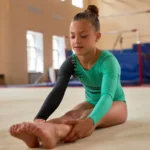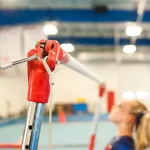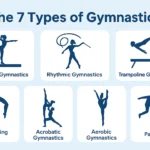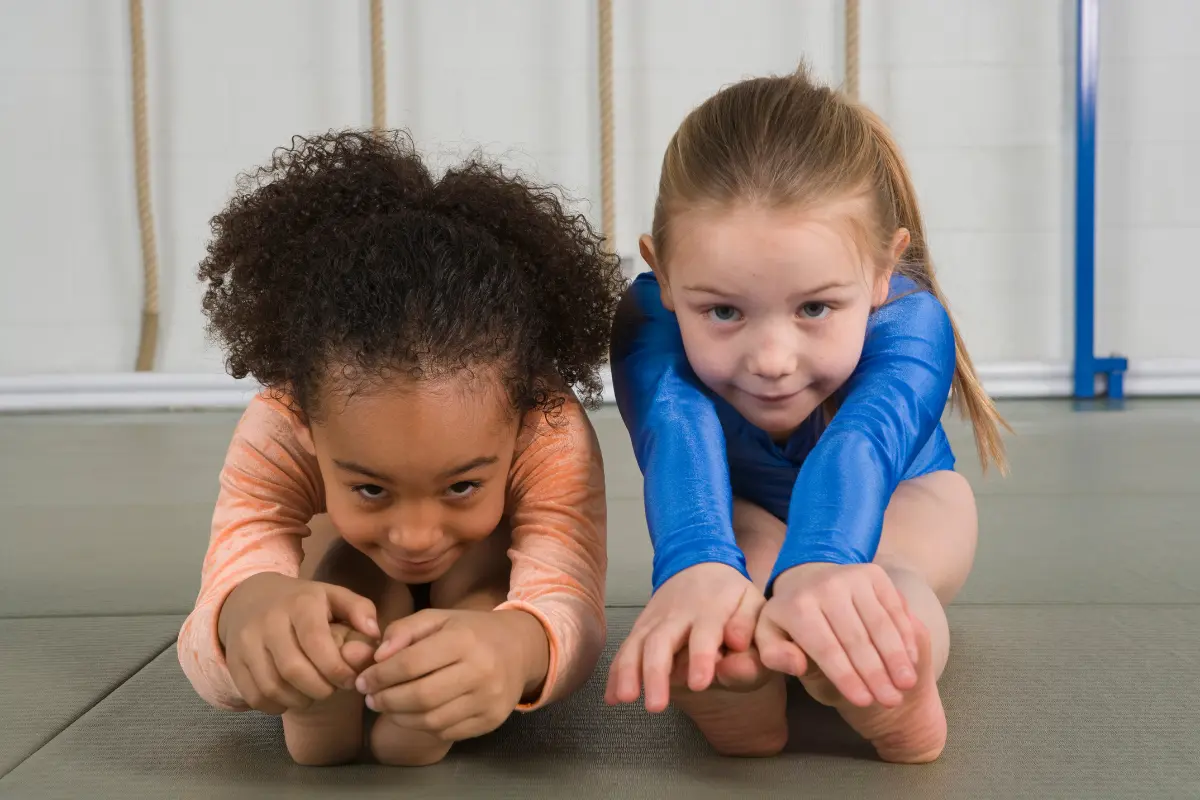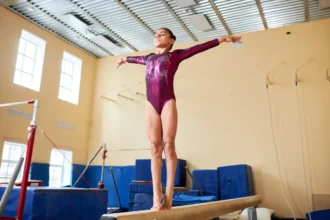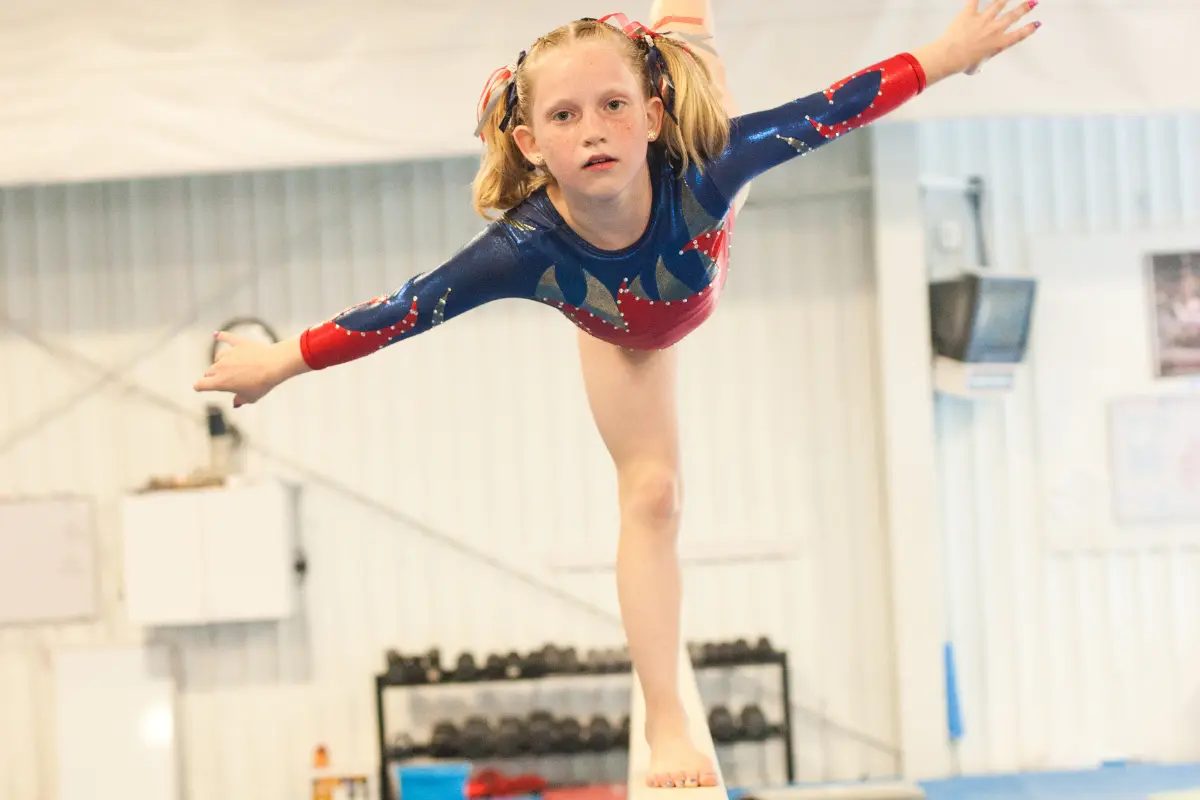The Women’s Development Program (formerly the Junior Olympic Program) is USA Gymnastics’ 10‑step staircase that shepherds athletes from their first forward roll to the brink of elite competition. Each level has a clear purpose, minimum age, and mobility score.
Levels 1–3: Introductory and Developmental (Non-Required Competition Levels)
These early levels introduce foundational movement and coordination. While Levels 1–3 are technically part of the program, they are often used in non-sanctioned or in-gym events and may not require formal competition.
- Skills Learned: Forward rolls, cartwheels, basic jumps, balance, and beam walks.
- Purpose: Develop body awareness, safety, and confidence in basic gymnastics movement.
- Competition: Optional; used as a stepping stone to Level 4.
Levels 4–5: Compulsory Competition Levels
Levels 4 and 5 are the first levels where gymnasts must compete with identical routines. These compulsory routines are developed by USAG and performed exactly as written to allow for objective judging.
- Skills Required:
- Level 4: Back handspring, front handspring vault, basic bar transitions.
- Level 5: Round-off back handspring series, kips, and stronger dance elements.
- Minimum Age: 7 for Level 4, 8 for Level 5.
- Advancement: Based on minimum all-around scores at sanctioned competitions (e.g., 34.00 or higher in many states).
Levels 6–10: Optional Levels
From Level 6 onward, gymnasts create custom routines tailored to their strengths while fulfilling required skill values and connections.
Level 6: First Optional Level
- Skill Mix: 5 A + 1 B
- Goal: Master clean routines with foundational strength; often targets state-level meets.
- Note: May be skipped if athlete is ready for Level 7.
Level 7: Artistic Growth
- Skill Mix: 5 A + 2 B
- Focus: Introduces flight and acrobatic combinations. Judges now expect more artistic and stylistic expression.
Level 8: Regional Readiness
- Skill Mix: 4 A + 4 B
- Advancement: More complex vaults like Tsuks or Yurchenkos appear; full bar transitions and giants become common.
- Goal: Qualify for regional competitions.
Level 9: C-Value Skills
- Skill Mix: 3 A + 4 B + 1 C
- Purpose: Incorporate mid-level elite skills; gymnasts may enter the Eastern/Western Nationals.
- Elite Start Point: Many gymnasts with elite goals begin taking that path from Level 9.
Level 10: The Pinnacle
- Skill Mix: 3 A + 3 B + 2 C
- Allowed: E-level (elite) skills permitted.
- Goal: Qualify for Development Program Nationals—often a direct link to college gymnastics or the elite pipeline.
Development Program Overview
| Level | Phase | Min Age | Mobility (AA) | Skill Mix | Purpose/Focus |
|---|---|---|---|---|---|
| 1–3 | Developmental | 4–6 | — | Foundation skills | Shapes, rolls, balance |
| 4 | Compulsory | 7 | 34.00 | — | First sanctioned meet, execution focus |
| 5 | Compulsory | 7 | ~32–34 | — | Stronger skills, prepares for optionals |
| 6 | Optional | 7 | 34.00 | 5 A + 1 B | Intro to optional routines |
| 7 | Optional | 7 | 34.00 | 5 A + 2 B | Advanced acro, flight elements |
| 8 | Optional | 8 | 34.00 | 4 A + 4 B | Full transitions, regional readiness |
| 9 | Optional | 8 | 34.00 | 3 A + 4 B + 1 C | National qualifier (Eastern/Western) |
| 10 | Optional | 9 | 34.00 | 3 A + 3 B + 2 C | DP Nationals & prep for elite/college |
Skill-value mix begins at Level 6. “A” skills are basics, “E” skills are elite-level elements.
Mobility Scores & Minimum Age Requirements
Moving up in the Women’s Development Program isn’t just about learning new skills—it also means meeting certain performance scores and age requirements. These rules are designed to make sure gymnasts grow safely and progress at the right pace.
What Is a Mobility Score?
A mobility score is the minimum score a gymnast must earn at a sanctioned meet to advance to the next level.
- All-Around Score (AA):
For Levels 4 through 10, the standard mobility score is usually a 34.00 All-Around (combined total across all four events). - Event Specialist Score:
Gymnasts who compete on just one or two events (instead of all four) typically need a minimum score of 8.50 per event to move up.
Note: Some states or regions may require higher scores. Always check with your coach or regional committee for the most accurate standards.
Minimum Age Requirements by Level
To compete at each level, a gymnast must also meet a minimum age, set by USA Gymnastics. These age limits help ensure gymnasts are developmentally ready for the physical and mental demands of that level.
| Level | Minimum Age |
|---|---|
| Level 1 | 4 years old |
| Level 2 | 5 years old |
| Level 3 | 6 years old |
| Level 4 | 7 years old |
| Level 5 | 7 years old |
| Level 6 | 7 years old |
| Level 7 | 7 years old |
| Level 8 | 8 years old |
| Level 9 | 8 years old |
| Level 10 | 9 years old |
To advance, a gymnast must meet both of these requirements:
- She must be old enough for the level.
- She must earn the required mobility score at a sanctioned meet.
Example Scenarios:
- A 6-year-old who scores a 34.00 AA cannot move to Level 4, because Level 4 requires a minimum age of 7.
- An 8-year-old who scores 33.50 AA at Level 6 cannot move to Level 7 yet. She’ll need to score 34.00 or higher first.
These rules help promote safe, steady progress so each gymnast has time to build the skills, strength, and confidence needed at every level.
Life Beyond Level 10
After Level 10, gymnasts have a few different paths they can take depending on their goals and interests.
1. Go Elite
If your gymnast dreams of competing at the highest level, the Elite Program is the next step after Level 10.
- Many athletes start with the Hopes Program, which is a stepping stone to elite.
- After that, they can move into Junior Elite (ages 11–15) or Senior Elite (16+).
- Elite gymnasts compete at major meets like the U.S. Championships, World Championships, and possibly the Olympics.
Keep in mind: Elite gymnastics takes a lot of time, energy, and dedication. It’s a great fit for athletes who truly love the sport and want to train at a very high level.
2. Compete in College (NCAA Gymnastics)
Another common path for Level 10 gymnasts is college gymnastics.
- Many colleges have gymnastics teams, especially in NCAA Divisions I, II, and III.
- Level 10 routines work well in college meets with just a few changes.
- Gymnasts can earn scholarships, travel with their team, and represent their school.
Coaches often start looking at athletes early, so it helps to have meet videos, strong scores, and good grades.
3. Stay in Level 10
Not every gymnast wants to go Elite or compete in college, and that’s totally okay!
- Many gymnasts stay in Level 10 through high school because they enjoy the sport and their teammates.
- They might aim to qualify for DP Nationals or just focus on improving their own skills each season.
- It’s a fun and flexible option with less pressure.
No matter which path a gymnast chooses, each one offers valuable experiences. For the most detailed and official information, refer to the USA Gymnastics Women’s Rules and Policies document.


